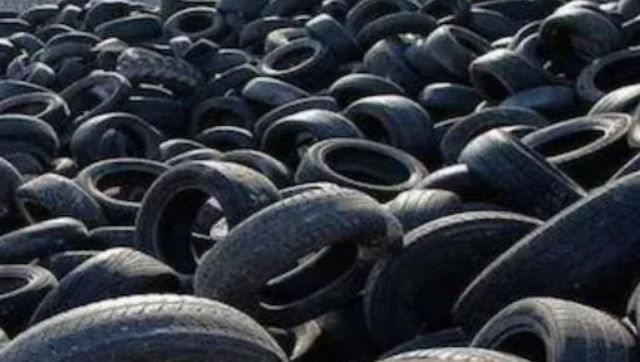How to read the ratings on your tyre? What do the different alphabets and numbers mean?
Ah, the tyre sidewall, that mysterious canvas of numbers and letters! We’ve all seen them, those cryptic markings that leave us scratching our heads. But fear not! Today, we’re embarking on a whimsical journey to uncover the secret language of tyres.
Get ready to demystify those modern-day hieroglyphics on the sidewall of a tyre and decode their meanings. And hey, don’t worry, I promise to keep it casual, easy to read, and sprinkle in a few jokes along the way!
The Alphabet Brigade
Let’s kick things off with the alphabets adorning the tyre’s sidewall. The first one we encounter is “P,” which stands for “Passenger.” So, remember, if you’re driving a passenger vehicle, you’ll most likely have a tyre with this glorious “P” at the beginning. Usually, some tire makers have started omitting this letter altogether now
Related Articles

Tyres need to meet standards for rolling resistance, wet grip, rolling sound emissions from October

MRF Tyres announced as official tyre supplier for Australian Rally Championship
Next up is “LT,” which stands for “Light Truck.” But don’t let the name fool you; these tyres are no lightweights! They are built to withstand the demands of trucks and heavy-duty vehicles. Think of them as the Arnold Schwarzeneggers of the tyre world.
Usually, some tire makers have started omitting this letter altogether now, but some manufacturers, still continue to use them, especially in markets where they have been made mandatory by the law.
The Width, Height, and More
Now, let’s dive into the numbers game. The first set of digits usually appears as something like 205/55R16. What’s the deal with these numbers? Well, let’s break it down.
The first number, 205, represents the tyre’s width in millimetres. It’s like measuring the tyre’s waistline! Think of it as the tyre’s fashion statement—wider tyres mean more grip on the road. So, if your tyre is rocking a 205, it’s saying, “Hey, I’ve got a wide stance, and I’m ready to tackle those curves!”
The second number, 55, is the tyre’s aspect ratio. It’s the percentage of the tyre’s height compared to its width. So, in this case, the tyre’s height is 55 per cent of 205. We can call it the tyre’s fashion sense—low-profile tyres have a smaller aspect ratio, while taller ones have a higher ratio. Just remember, a lower profile tyre means a sportier look and a firmer ride, like strutting your stuff in high heels!
Tyre Construction and Speed Ratings:
Alright, time to shift gears and talk about tyre construction and speed ratings. Buckle up!
The “R” in our earlier example, 205/55R16, stands for “Radial.” Most tyres on the road today are of the radial kind, where the internal cords run radially, like the spokes of a bicycle wheel. Radial tyres offer better grip, longer tread life, and a smoother ride. They’re the comfort queens of the tyre kingdom!
Now, let’s get to the speed ratings. This one’s crucial, folks, especially if you’ve got a need for speed! Speed ratings indicate the maximum safe speed a tyre can handle. They range from “Q” (99 mph) to “Y” (186 mph) and beyond! So, if you’re living life in the fast lane, make sure your tyre’s speed rating is up to par. Just remember, the rating isn’t a challenge—it’s a safety precaution!
Load Index and Production Date:
The load index, represented by a number, shows the maximum weight capacity of the tyre. It’s like knowing the limits of your tyre’s bench-pressing skills! The higher the number, the more weight your tyre can handle. So, if you’ve got a lot of gear in the trunk or you’re planning a cross-country road trip, make sure your tyre’s load index is up to the task!
For example, a tyre with a load index of 91 can carry 615kg of weight, in addition to the weight of the car. Usually, you will see a load index between 75 to 101, depending on whether you drive a hatchback or an SUV. In some cases, the load index number may even be higher.
Lastly, let’s uncover the tyre’s production date.
This is represented by a four-digit number, where the first two digits indicate the week, and the last two represent the year. So, if you spot “3519” on your tyre, it means it was made in the 35th week of 2019. Keep in mind, tyres have a shelf life, just like milk, so make sure they’re fresh and ready to roll!
This article has been generated using Artificial Intelligence
Read all the Latest News, Trending News, Cricket News, Bollywood News,
India News and Entertainment News here. Follow us on Facebook, Twitter and Instagram.
For all the latest Technology News Click Here
For the latest news and updates, follow us on Google News.
